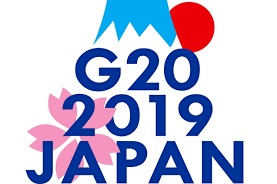 Hydrogen-powered energy solutions are the new kid on the block in the renewable energy space – promising to, among other things, provide a clean alternative to gasoline cars and lithium-ion batteries. This month, in preparation for this year’s G-20 summit in Japan, the International Energy Agency (IEA) released a report detailing the critical challenges and opportunities facing the ‘green hydrogen’ industry today. Energy and environment ministers and several global companies, including Hyundai Motor, Toyota and Air Liquide, addressed this topic at the G20 Ministerial Meeting on Energy Transitions and Global Environment for Sustainable Growth in Karuizawa, Japan over the weekend. Participants focused on “the ways in which hydrogen can help to achieve a clean, secure and affordable energy future; and how we can go about realizing its potential.” The hydrogen we use today – primarily for industrial purposes like petroleum refining and ammonia production – is extracted from coal and natural gas. It can also be taken from water in an energy-intensive process known as electrolysis. This energy intensive method uses electricity to separate water into gaseous hydrogen (H2) and oxygen (O2), thereby converting electrical energy into chemical energy. If the electricity used for the process comes from renewable sources, the process is entirely emissions-free (so-called green hydrogen), with water and oxygen as the only byproducts. Hydrogen can be transported as a gas by pipeline or in supercooled liquid form by ships, much like liquefied natural gas (LNG). From there it can be transformed into electricity via fuel cells or methane via the Sabatier reaction – both of which can be used to power homes and industries, and energize transport systems. With appropriate safety measures provided, these energy storage characteristics make hydrogen an excellent candidate for managing variability in electric grids with high wind and solar power penetration. Forbes
Hydrogen-powered energy solutions are the new kid on the block in the renewable energy space – promising to, among other things, provide a clean alternative to gasoline cars and lithium-ion batteries. This month, in preparation for this year’s G-20 summit in Japan, the International Energy Agency (IEA) released a report detailing the critical challenges and opportunities facing the ‘green hydrogen’ industry today. Energy and environment ministers and several global companies, including Hyundai Motor, Toyota and Air Liquide, addressed this topic at the G20 Ministerial Meeting on Energy Transitions and Global Environment for Sustainable Growth in Karuizawa, Japan over the weekend. Participants focused on “the ways in which hydrogen can help to achieve a clean, secure and affordable energy future; and how we can go about realizing its potential.” The hydrogen we use today – primarily for industrial purposes like petroleum refining and ammonia production – is extracted from coal and natural gas. It can also be taken from water in an energy-intensive process known as electrolysis. This energy intensive method uses electricity to separate water into gaseous hydrogen (H2) and oxygen (O2), thereby converting electrical energy into chemical energy. If the electricity used for the process comes from renewable sources, the process is entirely emissions-free (so-called green hydrogen), with water and oxygen as the only byproducts. Hydrogen can be transported as a gas by pipeline or in supercooled liquid form by ships, much like liquefied natural gas (LNG). From there it can be transformed into electricity via fuel cells or methane via the Sabatier reaction – both of which can be used to power homes and industries, and energize transport systems. With appropriate safety measures provided, these energy storage characteristics make hydrogen an excellent candidate for managing variability in electric grids with high wind and solar power penetration. Forbes
